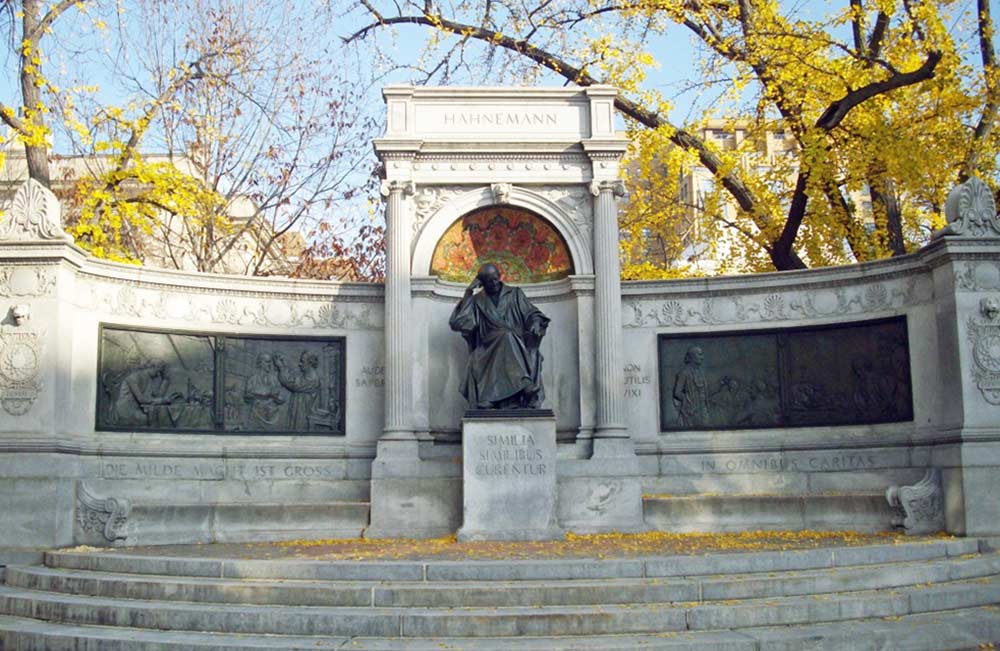In the early 19th century, Samuel Hahnemann (1755-1843) developed a therapeutic system of medicine called homeopathy, which literally means “similar suffering.” Classical Homeopathy is based on the principles set forth by Hahnemann in his treatise, The Organon of the Medical Art. The most notable principle of homeopathy is the law of similars; similia, similibus, curentur, or, let like be cured by like.
Simply, this means that any substance that produces certain symptoms in a healthy person, can cure similar symptoms in a sick person. The principle of treating with the law of similars dates back to Hippocrates (460-377 BC), but in its current form, homeopathy has been used worldwide for more than 200 years. Starting with experiments (called “provings”) on himself, Dr. Hahnemann administered medicinal substances to healthy volunteers (called “provers”). Symptoms that developed in the provers while taking a specific substance gave the homeopathic “picture” of, and indications for, that remedy. Over the years, by means of provings, toxicological data, and clinical experience, the homeopathic drug pictures of over 3000 substances have been derived. See Provings
Principles of Classical Homeopathy
Classical homeopathy is based first on the Law of Similars, ‘like cures like’. Homeopathic medicines (remedies) are prepared by specialist pharmacies using a careful process of dilution and succussion (a specific form of vigorous shaking). Any plant, mineral or animal substance can be used to make a remedy. The original substance is diluted in liquid repeatedly, and vigorously shaken with each dilution. This process is called ‘potentization’ and it explains the power and efficacy of homeopathic remedies.
In Classical homeopathy, we believe in the ‘minimal dose’, that is, to use the lowest dose and fewest number of dose repetitions that are needed in each particular case.
Homeopaths believe in what Constantine Hering called the “Law of Cure”, which means we heal from the inside out, from top to bottom, with the most important issues curing first. We understand that chronic illness occurs in the opposite manner, that is less important issues growing into more important issues.
Homeopathy is truly holistic medicine; we consider and treat the whole person, never just one problem or condition. We treat the ‘Totality’ of the person as a unique individual, which is why homeopathy cures deeply and profoundly.
The list of principles:
1. The Law of Similars– like cures like
2. Potentization– dilution and succussion
3. Minimal Dose
4. Totality (treating the whole person- holistic)
5. Individuality– every patient is unique
History and Future of Classical Homeopathy
In the 19th century, homeopathy’s popularity grew quickly, in part due to Samuel Hahnemann’s success treating diseases such as cholera and scarlet fever. By 1900, 20- 30 percent of American doctors were homeopaths, and yet homeopathy almost disappeared in the United States in the 1920’s, due to the efforts of the pharmaceutically controlled medical establishment.
Today, however, more and more people are turning to this safe, non-toxic form of treatment as one of the only ways to treat chronic illness on all levels of being; physical, emotional and mental. The use of homeopathy as an alternative medical system is very strong in many countries like Great Britain and India, it is growing in popularity in the United States, and is now enjoying a worldwide renaissance. The New York School of Homeopathy is helping to meet the growing need for competently trained professional homeopaths.
Learn how we teach Classical Homeopathy:
The New York School of Homeopathy – Blending the Old and the New

